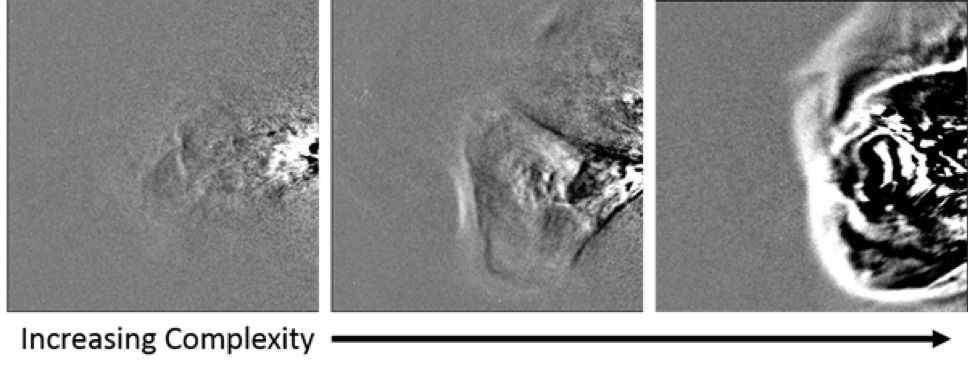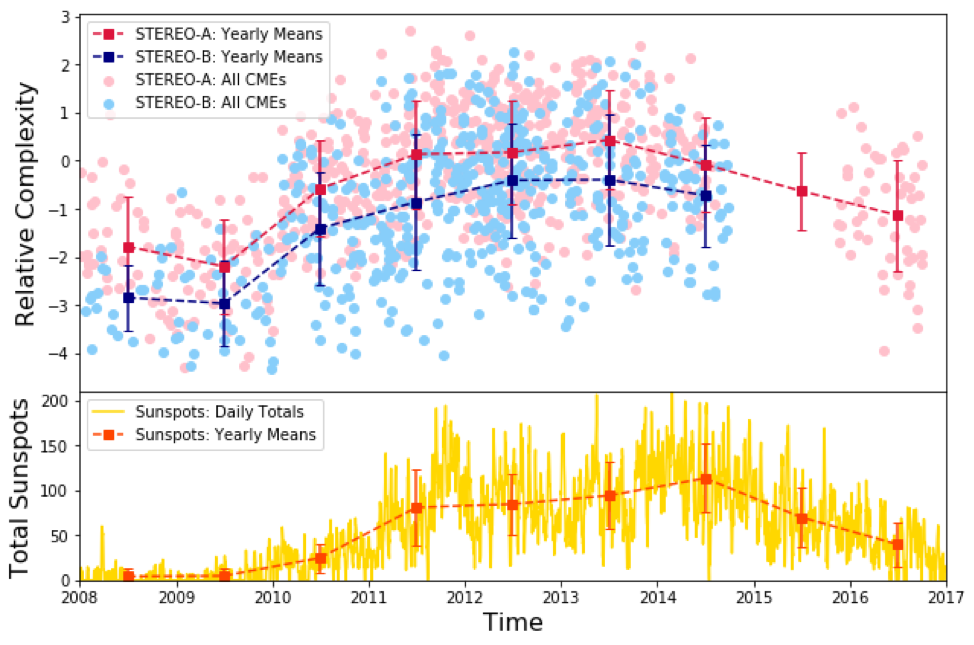MIST
Magnetosphere, Ionosphere and Solar-Terrestrial
The visual complexity of coronal mass ejections follows the solar cycle
By Shannon Jones (University of Reading)
Coronal Mass Ejections (CMEs), or solar storms, are huge eruptions of particles and magnetic field from the Sun. With the help of 4,028 citizen scientists, we found that the appearance of CMEs changes over the solar cycle, with CMEs appearing more visually complex towards solar maximum.
We created a Zooniverse citizen science project in collaboration with the UK Science Museum, where we showed pairs of images of CMEs from the Heliospheric (wide-angle white-light) Imagers on board the twin STEREO spacecraft, and asked participants to decide whether the left or right CME looked most complicated, or complex. We used these data to rank 1,110 CMEs in order of their relative visual complexity. Figure 1 shows three example storms from across the ranking (see figshare for an animation with all CMEs).

Figure 1. Example images showing three example CMEs in ranked order of subjective complexity increasing from low (left-hand image) through to high (right-hand image).
Figure 2 shows the relative complexity of all 1,110 CMEs, with CMEs observed by STEREO-A shown by pink dots, and CMEs observed by STEREO-B shown by blue dots. This shows that the annual average complexity values follow the solar cycle, and that the average complexity of CMEs observed by STEREO-B is consistently lower that the complexity of CMEs observed by STEREO-A.
These results suggest that there is some predictability in the structure of CMEs, which may help to improve future space weather forecasts.

Figure 2. Top panel: relative complexity of every CME in the ranking plotted against time. Pink points represent STEREO-A images, while blue points represent STEREO-B images. Annual means and standard deviations are over plotted for STEREO-A (red dashed line) and STEREO-B (blue dashed line) CMEs. Bottom panel: Daily total sunspot number from SILSO shown in yellow, with annual means over plotted (orange dashed line).
See the paper for more details:
Jones, S. R., C. J. Scott, L. A. Barnard, R. Highfield, C. J. Lintott and E. Baeten (2020): The visual complexity of coronal mass ejections follows the solar cycle. Space Weather, https://doi.org/10.1029/2020SW002556.